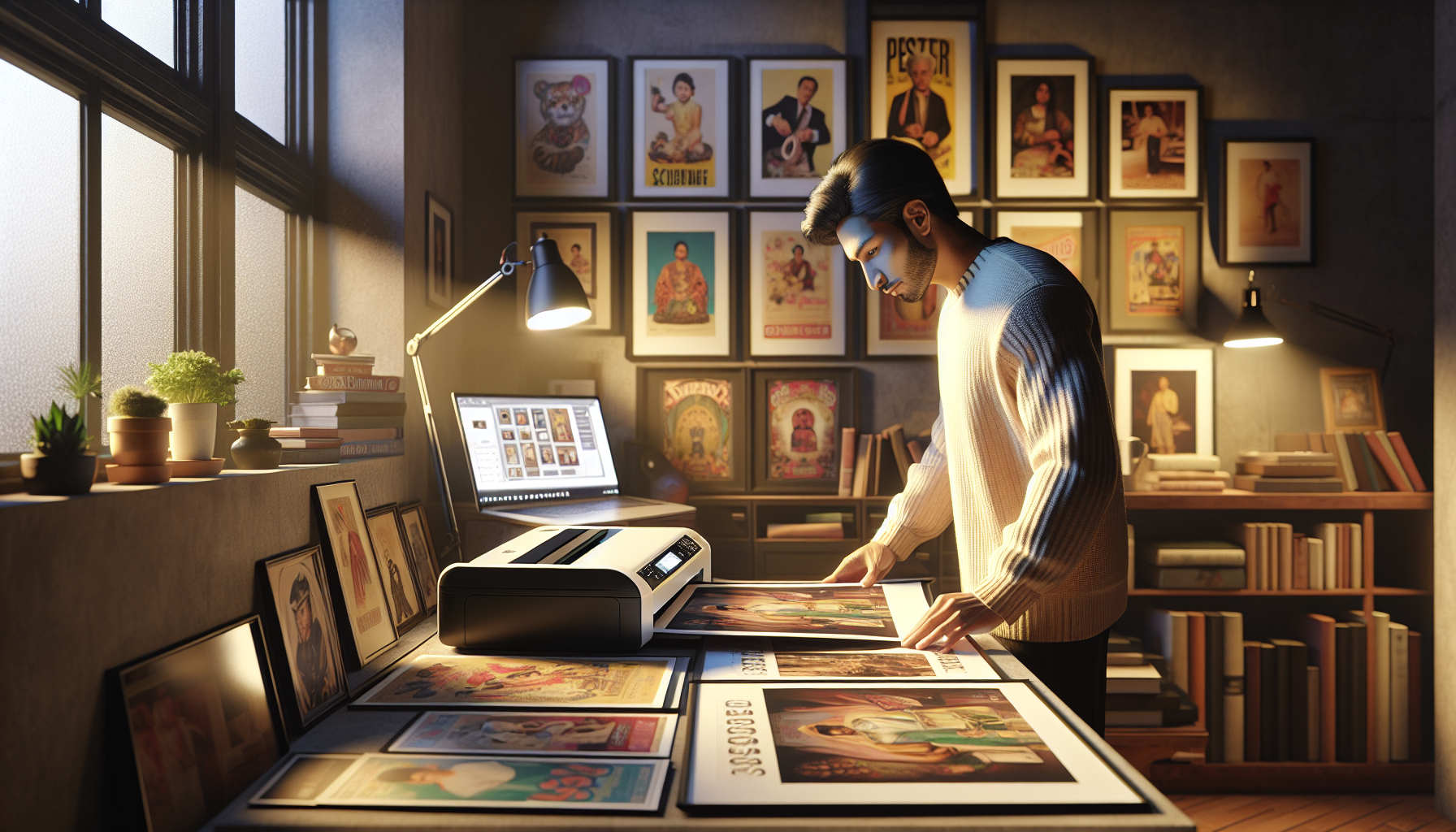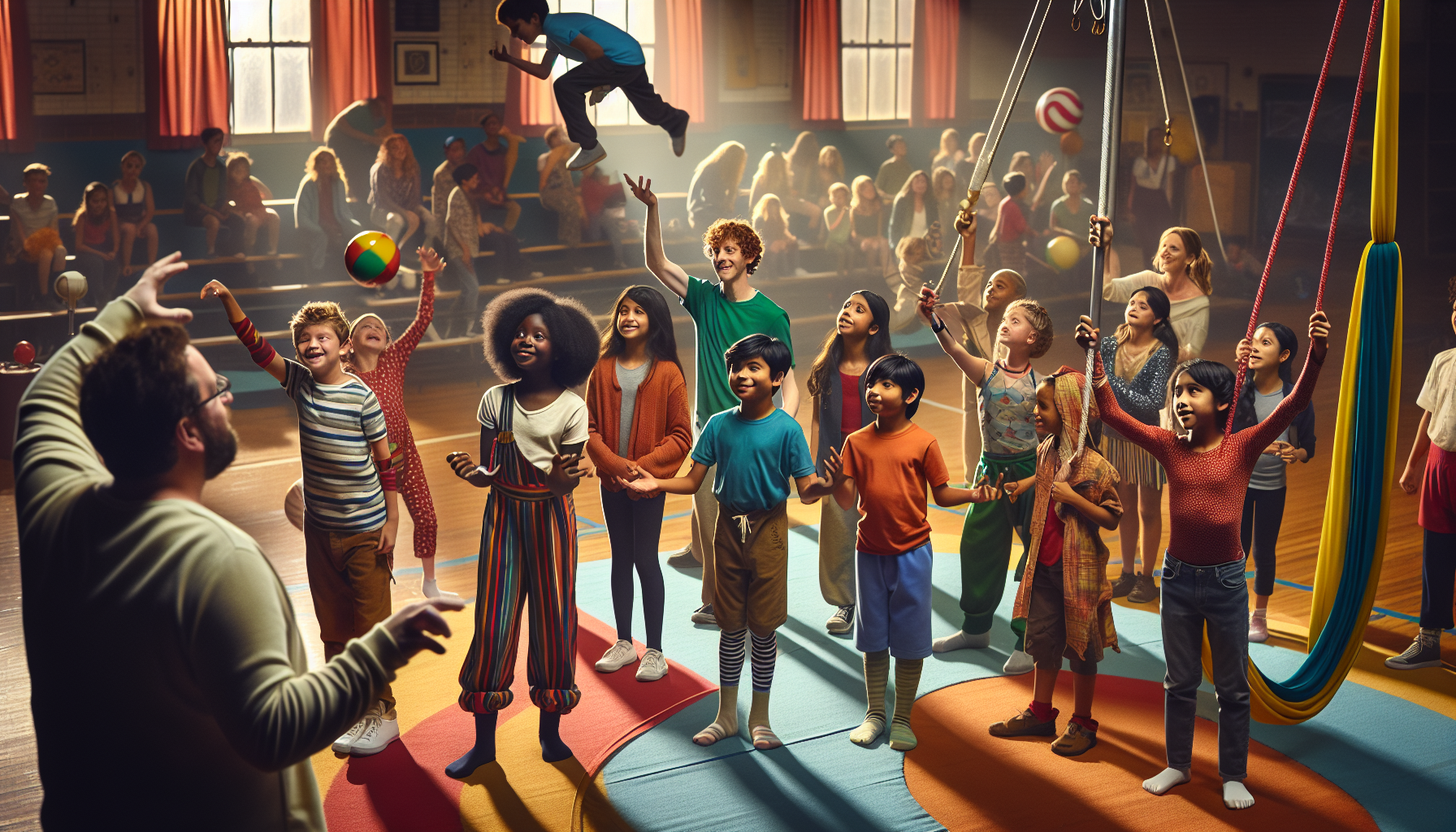In a world where digital technology reigns supreme, the tangible mementos of our past often hold the most sentimental value. From the concert poster that marked your first live music experience to the vintage movie poster that graced your childhood bedroom wall, these artifacts encapsulate memories that deserve preservation. Yet, as time takes its toll, the vibrant colors fade, and the delicate paper becomes more fragile. How can we ensure these cherished pieces of history remain intact for future generations? The answer lies in the art of digitization—a process that not only preserves the essence of these posters but also allows for easier sharing and accessibility in our increasingly digital lives. 📸
Embarking on the journey of digitizing your posters might seem daunting at first, with concerns about maintaining quality, choosing the right equipment, and ensuring proper storage often leading to hesitation. However, the process is not only manageable but also immensely rewarding when approached with the right strategies and tools. This comprehensive guide will walk you through each step, from selecting the appropriate scanning methods and equipment to mastering editing techniques that enhance the digital representation of your posters without compromising their authenticity. Additionally, we will explore creative storage solutions and platforms that ensure your digital files remain safe and accessible, providing peace of mind and easy access whenever nostalgia strikes.
Throughout this article, you’ll discover expert tips on handling your posters with care, understanding the nuances of resolution and file formats, and employing software that brings your digital archive to life. Whether you’re a seasoned collector or a newcomer eager to preserve a small but treasured collection, these insights will equip you with the knowledge to embark on this digitization journey confidently. By the end, you’ll not only have a robust digital archive but also a newfound appreciation for the blend of technology and nostalgia that keeps our memories alive. So, let’s dive into the world of digitization and unlock the potential to preserve your beloved posters for generations to come! 🖼️✨
Why Digitizing Your Posters Matters
Digitizing posters might seem like a daunting task, but the benefits it provides are well worth the effort. In our increasingly digital world, preserving physical items in a digital format ensures they remain accessible and secure for years to come. From protecting them against physical damage to making them easily shareable, digitizing posters serves various purposes, both practical and sentimental. As you begin this process, it’s crucial to understand why it matters and how it can transform the way you interact with your cherished memories.
Firstly, physical posters are susceptible to a myriad of damages, including fading from sunlight, tearing, and water damage. By digitizing these items, you create a backup that remains intact, regardless of the conditions affecting the original piece. This digital copy can be enhanced, printed, or shared without fear of losing the original’s integrity. Moreover, digitizing allows for the restoration of posters that may already have incurred damage, giving them new life and preserving the content for future generations.
Additionally, having a digital version of your posters makes sharing them with friends, family, or on social media platforms much more straightforward. A digital archive of your collection is not only easily accessible but also allows you to create new projects, such as photo books or digital galleries, which can be enjoyed by a broader audience. This ease of access and sharing enhances the emotional connection with your posters, allowing you to relive memories and share them with others in a meaningful way.
Tools and Techniques for Digitizing Posters
Embarking on the journey of digitizing your posters requires the right tools and techniques to ensure the process is smooth and the results are of high quality. The equipment you choose will largely depend on the size of your posters and your budget, but there are several approaches that can cater to different needs. Scanners, cameras, and smartphone apps each offer unique advantages and can be employed to capture the essence of your posters accurately.
Flatbed scanners are a popular choice for digitizing posters due to their ability to capture high-resolution images. When using a scanner, ensure it is large enough to accommodate your posters, or be prepared to stitch together multiple scans using software. Cameras offer flexibility, especially for larger posters or when a scanner is unavailable. Position the camera parallel to the poster and ensure even lighting to avoid glare or shadows. Additionally, several smartphone apps are designed to assist in scanning documents and images, providing a convenient solution for digitizing posters on the go.
Each method has its pros and cons, as summarized in the table below:
| Method | Advantages | Disadvantages |
|---|---|---|
| Flatbed Scanner | High resolution, accurate color reproduction | Limited by scanner size, time-consuming for large posters |
| Camera | Flexible, good for large posters | Requires proper setup and lighting |
| Smartphone Apps | Convenient, easily accessible | Lower resolution, dependent on phone camera quality |
Once you have chosen your method, it’s time to start digitizing. Follow best practices, such as cleaning your posters beforehand, ensuring a dust-free environment, and adjusting scanner or camera settings for optimal results. Remember, the goal is to capture the poster in as much detail as possible, preserving its color, texture, and overall aesthetic.
Organizing and Storing Digital Copies
After successfully digitizing your posters, the next step is organizing and storing these digital copies effectively. An organized digital archive not only makes retrieval easier but also safeguards your digital assets. Consider utilizing cloud storage services, external hard drives, or a combination of both to ensure your files are safe and accessible.
Cloud storage services, such as Google Drive, Dropbox, or OneDrive, offer the convenience of accessing your digital posters from anywhere with an internet connection. These platforms also provide backup options, ensuring your files remain secure in case of hardware failure. Additionally, cloud storage allows you to share files effortlessly with others, enhancing the social aspect of your poster collection.
Alternatively, external hard drives offer a physical solution for storing your digital copies. They provide large storage capacities and can be an excellent choice for those who prefer to keep their files offline. To maximize security, consider using both cloud and external hard drives, creating multiple backups to prevent data loss.
Organize your digital archive by creating folders for different categories or themes. Use descriptive file names and metadata to make searching for specific posters more efficient. A well-structured digital archive not only preserves your collection but also makes it a joy to browse through, reliving memories and discovering new connections.
Creating a Digital Archive: Step-by-Step
- Choose a storage solution: Cloud, external hard drive, or both.
- Create a folder structure based on themes or categories.
- Use descriptive file names for easy identification.
- Add metadata such as date, location, and event details.
- Regularly backup your files to prevent data loss.
Watch the video below for a detailed guide on organizing digital files effectively.
📹 How to Organize Your Digital Files | The Minimal Mom
Enhancing and Sharing Your Digital Posters
Digitizing your posters opens up a world of possibilities for enhancement and sharing. Digital tools enable you to edit and improve your images, correcting color discrepancies, removing blemishes, and even restoring faded or damaged sections. Software like Adobe Photoshop, GIMP, or even mobile editing apps can be utilized to bring your digital posters to life.
After enhancing your posters, consider creating digital albums or slideshows to showcase your collection. These formats are perfect for sharing with friends and family or displaying at events. Social media platforms such as Instagram and Facebook also offer opportunities to share your posters with a broader audience, inviting engagement and interaction.
Engage with your audience by telling the stories behind your posters. Each piece likely has a unique history or memory associated with it, and sharing these narratives can deepen the connection between your audience and your collection. Encourage discussions and invite others to share their related experiences, fostering a community around shared interests.
In summary, digitizing your posters not only preserves them but also enriches the way you interact with and share these cherished memories. By following the steps outlined above, you can ensure your poster collection remains safe, accessible, and vibrant for years to come.

Conclusion
Preserving memories is an endeavor that many cherish, yet it often remains elusive in the hustle and bustle of modern life. The importance of digitizing posters, which serve as visual capsules of cherished moments, cannot be understated. As we journeyed through the various facets of this endeavor, it is clear that taking the time to preserve such artifacts not only helps maintain their physical integrity but also enhances their accessibility for future generations.
We began by exploring the fundamental reasons behind digitizing posters. Posters, often representing personal milestones, cultural events, or historic occasions, are vulnerable to the ravages of time. Paper deteriorates, colors fade, and before long, these tangible memories risk becoming mere whispers of the past. Digitizing them ensures that they remain vibrant and accessible, allowing for easy sharing with friends and family across the globe.
The first step in this preservation process involves choosing the right tools and technology. Selecting a high-quality scanner is crucial. We discussed the importance of opting for a scanner that offers high resolution and color accuracy, ensuring that every detail of the poster is captured in its full glory. This step forms the foundation upon which the entire digitization process rests.
Once equipped with the right tools, we delved into the process of preparing the posters for scanning. This involves careful cleaning and flattening to ensure that the final digital image is free from dust, creases, or any blemishes that could compromise the quality of the scan. This preparation phase is as much about preserving the physical artifact as it is about ensuring the quality of the digital copy.
The act of scanning itself was examined in detail, highlighting the nuances of settings such as resolution, file format, and color balance. Each of these elements plays a pivotal role in ensuring that the digital version of the poster is as faithful as possible to the original. We emphasized the importance of saving these digital files in a format that maintains quality without compromising storage space, such as TIFF or high-quality JPEGs.
Post-processing, often overlooked, is another critical component of the digitization process. Here, we explored how software tools can be utilized to enhance and restore images, correcting any imperfections that may have been captured during scanning. This stage ensures that the digital poster not only preserves the original image but also enhances it where necessary, to better reflect its original state.
Storing and organizing these digital files formed the next crucial step in our journey. We discussed various storage solutions, from local backups to cloud-based options, emphasizing the importance of redundancy to guard against data loss. Proper organization through the use of metadata and file naming conventions ensures that these digital memories remain easily accessible and searchable in the years to come.
Finally, we considered the sharing of these digital treasures. Whether it be through social media platforms, personal websites, or digital galleries, sharing these images ensures that they are not only preserved but also appreciated by a wider audience. This aspect of the process transforms personal memories into collective ones, fostering a sense of community and shared history.
In conclusion, the act of digitizing posters is a powerful way to safeguard our personal and collective histories. It is a task that requires care, attention, and a willingness to embrace technology for the preservation of the past. As you embark on your own journey of preservation, remember that each step you take ensures that future generations can enjoy and learn from the visual stories that these posters tell.
Your engagement in this process is not just about preserving a piece of paper; it’s about cherishing the moments and emotions that these images represent. We encourage you to share your experiences and insights, perhaps even inspiring others to embark on their own preservation journeys. The tools and techniques we’ve explored offer a roadmap, but it is your passion and dedication that truly bring these memories to life.
We invite you to comment on your experiences, share this article with others who may benefit, and consider the impact of preserving memories in this digital age. By doing so, you contribute to a community of memory keepers who value the past while looking forward to the future. Let’s continue this journey together, ensuring that the memories we cherish today are available for the generations of tomorrow. 🌟
Toni Santos is a visual storyteller and archival artisan whose creative journey is steeped in the bold colors, dramatic typography, and mythic imagery of old circus posters. Through his artistic lens, Toni breathes new life into these once-lurid canvases of wonder, transforming them into tributes to a golden era of spectacle, showmanship, and cultural fantasy.
Fascinated by the visual language of vintage circuses — from roaring lions to gravity-defying acrobats, from hand-painted banners to gothic typefaces — Toni explores how these posters once captured the imagination of entire towns with nothing more than ink, illusion, and a promise of awe. Each composition he creates or studies is a dialogue with history, nostalgia, and the raw aesthetics of entertainment on the move.
With a background in handcrafted design and visual heritage, Toni blends artistic sensitivity with historical insight. His work traces the forgotten typographies, chromatic choices, and symbolic flair that defined circus marketing in the 19th and early 20th centuries — a time when posters were not just advertisements, but portable portals to dreamworlds.
As the creative force behind Vizovex, Toni curates collections, illustrations, and thoughtful narratives that reconnect modern audiences with the magic of old circus art — not just as ephemera, but as cultural memory etched in paper and pigment.
His work is a tribute to:
The flamboyant storytelling of early circus posters
The lost art of hand-lettered show promotion
The timeless charm of visual fantasy in public space
Whether you’re a vintage print enthusiast, a circus history lover, or a designer inspired by antique aesthetics, Toni invites you into a world where tigers leap through fire, strongmen pose in perfect symmetry, and every corner of the poster whispers: Step right up.





